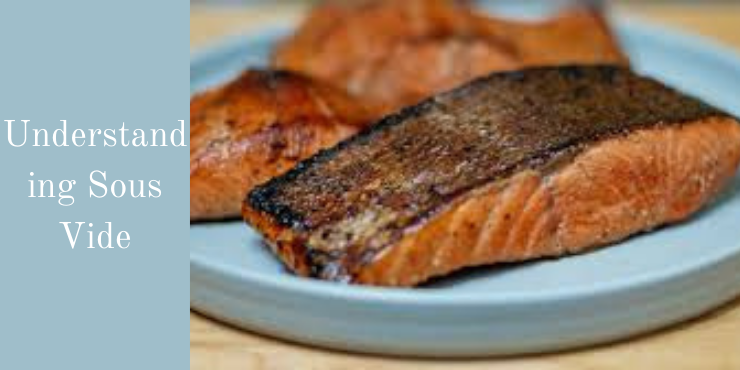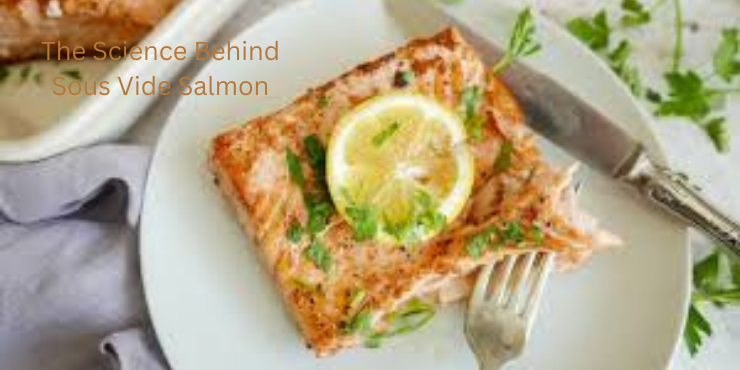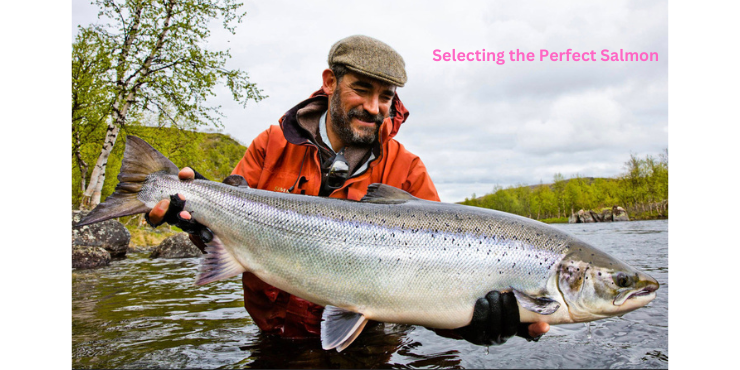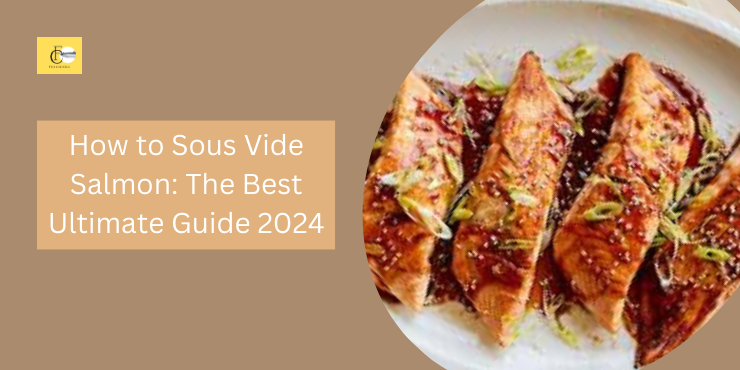Introduction
Cooking salmon to perfection can be tricky, but there’s a method that promises consistent, restaurant-quality results every time: sous vide. If you’re wondering what sous vide is and why you should use it for salmon, you’re in the right place. Let’s dive into the world of sous vide and discover how to make the best salmon you’ve ever tasted.
What is Sous Vide Cooking?
Sous vide, which means “under vacuum” in French, is a cooking technique where food is vacuum-sealed in a bag and cooked to precise temperatures in a water bath. This method ensures that your food is cooked evenly from edge to edge, maintaining its natural juices and flavors.
Why Sous Vide Salmon?
Salmon is a delicate fish that can easily be overcooked, leading to a dry, unappetizing meal. Sous vide cooking takes the guesswork out of the equation, allowing you to achieve perfectly cooked salmon every time. The controlled temperature ensures that the salmon retains its moisture and texture, making it tender and flavorful.
Understanding Sous Vide

History and Origin
Sous vide cooking originated in France in the 1970s and has since become a favorite among chefs and home cooks alike. Its popularity is due to its precision and the high quality of the food it produces.
Benefits of Sous Vide Cooking
Sous vide offers numerous benefits:
- Consistency: Achieve the same results every time.
- Flavor: Food retains its natural flavors and juices.
- Nutrition: Minimal nutrient loss compared to traditional cooking methods.
- Convenience: Prepare food in advance and cook it to perfection when you’re ready.
The Science Behind Sous Vide Salmon

How Sous Vide Works
Sous vide cooking involves sealing food in a vacuum-sealed bag and immersing it in a water bath at a controlled temperature. The water circulates the food, cooking it evenly and precisely to the desired temperature.
Why Salmon is Perfect for Sous Vide
Salmon’s delicate texture and rich flavor make it an ideal candidate for sous vide cooking. The gentle, even heat ensures that the salmon remains moist and flavorful without the risk of overcooking.
Essential Equipment for Sous Vide Cooking
Sous Vide Machine
A reliable sous vide machine (or immersion circulator) is essential. This device heats and circulates the water, maintaining the precise temperature needed for cooking.
Vacuum Sealer or Ziplock Bags
A vacuum sealer removes air from the bag, ensuring a tight seal and better heat transfer. If you don’t have a vacuum sealer, high-quality ziplock bags can work as well.
Precision Cooker
A precision cooker allows you to set and maintain the exact temperature needed for your recipe.
Other Useful Tools
Consider having:
- Tongs: For handling hot bags.
- Clips: To secure bags to the side of the pot.
- Thermometer: For double-checking temperatures.
Choosing the Right Salmon

Wild-Caught vs. Farm-Raised
Wild-caught salmon generally has a more robust flavor and firmer texture, while farm-raised salmon is milder and often more affordable. Choose based on your taste preference and budget.
Fresh vs. Frozen
Both fresh and frozen salmon can be used for sous vide. Frozen salmon is often more convenient and can be just as high-quality as fresh.
Selecting the Best Cuts
Opt for center-cut fillets for even cooking. Ensure the salmon is skinless or remove the skin before cooking to avoid a rubbery texture.
Preparation Before Cooking
Seasoning and Marinating
Season the salmon with salt, pepper, and your favorite herbs or spices. A simple marinade of olive oil, lemon, and dill works beautifully.
Prepping the Salmon
Pat the salmon dry with paper towels before seasoning to ensure the seasoning sticks.
Bagging the Salmon Correctly
Place the seasoned salmon in a vacuum-sealed bag or ziplock bag. If using a ziplock bag, use the water displacement method to remove air.
Setting Up Your Sous Vide Station
Preparing the Water Bath
Fill a large container or pot with water. The water level should be high enough to fully submerge the bags but not so high that it overflows when the food is added.
Attaching the Sous Vide Machine
Attach your sous vide machine to the side of the container and set it to the desired temperature.
Setting the Temperature and Time
For salmon, a temperature range of 120°F to 130°F (49°C to 54°C) is ideal. The cooking time typically ranges from 30 to 45 minutes.
Cooking Times and Temperatures
Optimal Temperatures for Different Textures
- Medium-Rare (Soft, Flaky): 120°F (49°C)
- Medium (Tender, Moist): 125°F (52°C)
- Well-Done (Firm): 130°F (54°C)
Recommended Cooking Times
Cook the salmon for at least 30 minutes and up to 45 minutes. Longer cooking times can result in a more tender texture but avoid exceeding 1 hour to prevent mushiness.
Cooking the Salmon
Placing the Bag in the Water Bath
Carefully place the sealed bag in the preheated water bath, ensuring it’s fully submerged. Use clips to secure the bag if needed.
Monitoring the Cooking Process
While sous vide cooking is hands-off, occasionally check the water level and temperature to ensure consistency.
Ensuring Even Cooking
Ensure the bags are not overlapping to allow for even heat distribution.
Finishing Touches
Removing the Salmon from the Bag
Once cooked, remove the bag from the water bath and gently take out the salmon.
Patting Dry and Resting
Pat the salmon dry with paper towels. Let it rest for a few minutes before serving.
Optional: Searing for a Crispy Finish
For a crispy exterior, quickly sear the salmon in a hot pan with a bit of oil. Sear for 30 seconds to 1 minute on each side.
Serving Suggestions
Simple Garnishes
Top your salmon with fresh herbs, a squeeze of lemon, or a sprinkle of sea salt for added flavor.
Pairing with Sides and Sauces
Serve with sides like roasted vegetables, rice, or a fresh salad. Complement with sauces such as hollandaise, dill cream, or a simple herb butter.
Troubleshooting Common Issues
Avoiding Overcooking
Stick to the recommended times and temperatures. If in doubt, it’s better to cook slightly under and finish with a sear.
Handling Under-seasoning
Taste and adjust the seasoning after cooking. A sprinkle of salt or a squeeze of lemon can enhance flavors.
Dealing with Bag Leaks
If the bag leaks, carefully transfer the salmon to a new bag and continue cooking. Double-check the seal before starting.
Cleaning Up After Sous Vide
Proper Care of Equipment
Clean your sous vide machine and containers thoroughly after each use to maintain hygiene and performance.
Storing Leftovers
Store leftover salmon in an airtight container in the refrigerator for up to three days. Reheat gently using the sous vide method to avoid drying out.
Health Benefits of Sous Vide Salmon
Nutrient Retention
Sous vide cooking preserves more nutrients compared to traditional methods, ensuring you get the most out of your meal.
Healthy Fats and Omega-3s
Salmon is rich in omega-3 fatty acids, which are beneficial for heart health and reducing inflammation.
Conclusion
Sous vide salmon is a game-changer in the kitchen. With precise temperature control and minimal effort, you can enjoy perfectly cooked, flavorful salmon every time. So why not give it a try and elevate your home cooking to a whole new level?
FAQs
How long does it take to sous vide salmon? Typically, it takes 30 to 45 minutes to sous vide salmon, depending on your desired texture.
Can you sous vide frozen salmon? Yes, you can sous vide frozen salmon. Simply add an extra 30 minutes to the cooking time.
Do you need to sear sous vide salmon? Searing is optional but recommended if you want a crispy exterior.
What is the best temperature to sous vide salmon? For medium-rare salmon, 120°F (49°C) is ideal. For medium, aim for 125°F (52°C).
Is sous vide salmon safe? Yes, sous vide salmon is safe as long as it is cooked at the correct temperature and handled properly.

